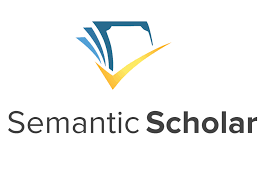Analysis and comparison of Hong Kong English and Mainland China English with Kachru’s three circles model
DOI:
https://doi.org/10.5281/zenodo.14281296Keywords:
Kachru’s three-circles model, Hong Kong English (HKE), Mainland China English (MCE), Phonological features, Educational policyAbstract
English's spread worldwide has led to its development as a pluricentric language with varying standards, depicted by Braj Kachru's three concentric-circle model. Examining the differences between English usage in Hong Kong and Mainland China categorized under Outer and Expanding Circles respectively is the focus of this paper. Due to its colonial past, Hong Kong utilizes English as an official co-language for governance affairs such as law or business transactions; however, it possesses distinctive phonological, grammatical patterns influenced majorly by Cantonese. On the other hand, Mainland China sees English mainly in terms of international trade & communication requirements while prioritizing functional skills rather than native-like fluency through educational policies instead. Furthermore, the historical background variances along with socio-linguistic status reflected distinctly across linguistic characteristics highlight implications concerning tailored curricula that maintain regional identities alongside global competencies essential for both regions' education programs alike.
Downloads
References
[1]Al-Mutairi, M. A. (2020). Kachru's Three Concentric Circles Model of English Language: An Overview of Criticism & the Place of Kuwait in It. English Language Teaching 13(1): 85-88.
[2]Ansaldo, U. (2010). Contact and Asian varieties of English. The handbook of language contact: 498-517.
[3]Chan, J. Y., & Evans, S. (2011). Choosing an appropriate pronunciation model for the ELT classroom: A Hong Kong perspective. Journal of Asia TEFL, 8(4).
[4]Chan, J. Y. (2016). Contextualising a pedagogical model for English‐language education in Hong Kong. World Englishes, 35(3), 372-395.
[5]Coniam, D. (2014). English language education and assessment: Recent developments in Hong Kong and the Chinese mainland. Springer.
[6]Fang, F. G. (2017). World Englishes or English as a Lingua Franca: Where does English in China stand?: An ideological negotiation and attitudinal debate of the use and function of English in the Chinese context. English Today 33(1): 19-24.
[7]Fang, F. G. (2017). World Englishes or English as a Lingua Franca: Where does English in China stand?: An ideological negotiation and attitudinal debate of the use and function of English in the Chinese context. English Today, 33(1), 19-24.
[8]Feng, A. (2012). Spread of English across greater China. Journal of Multilingual and Multicultural Development, 33(4), 363-377.
[9]Gil, J. and B. Adamson (2011). The English language in mainland China: A sociolinguistic profile. English language education across greater China 1: 23-45.
[10]Hansen Edwards, J. G. (2015). Hong Kong English: attitudes, identity, and use. Asian Englishes 17(3): 184-208.
[11]Poon, F. K.-C. (2006). Hong Kong English, China English and World English. English Today 22(2): 23-28.
[12]Proshina, Z. G. and C. L. Nelson (2020). Varieties of English and Kachru’s expanding circle. Russian Journal of Linguistics 24(3): 523-550.
[13]Tam, K. K., & Tam, K. K. (2019). Localism in English Language Teaching in Hong Kong. The Englishized Subject: Postcolonial Writings in Hong Kong, Singapore and Malaysia, 55-64.
[14]Xie, J. (2014). Challenges and opportunities for the pluricentric approach in ESL/EFL teaching: An empirical study of college English teaching in China. English Today, 30(2), 43-50.
[15]Zhang, Q. (2013). The attitudes of Hong Kong students towards Hong Kong English and Mandarin-accented English: What are the current status and future developments of Chinese Englishes, in particular, Hong Kong English and Mandarin-accented English? English Today 29(2): 9-16.

Downloads
Published
How to Cite
Issue
Section
License
Copyright (c) 2024 Haoyang Feng

This work is licensed under a Creative Commons Attribution 4.0 International License.




 Wechat:ATRIPRESS
Wechat:ATRIPRESS



















